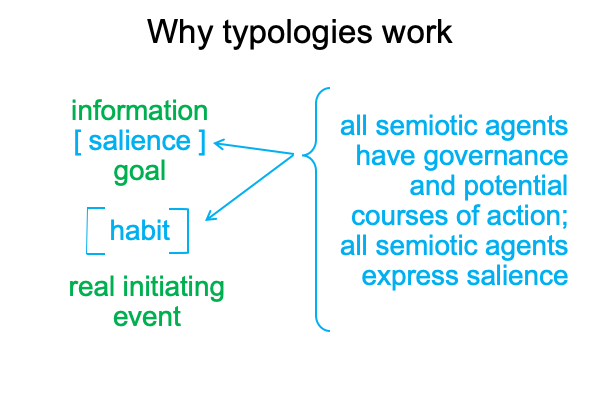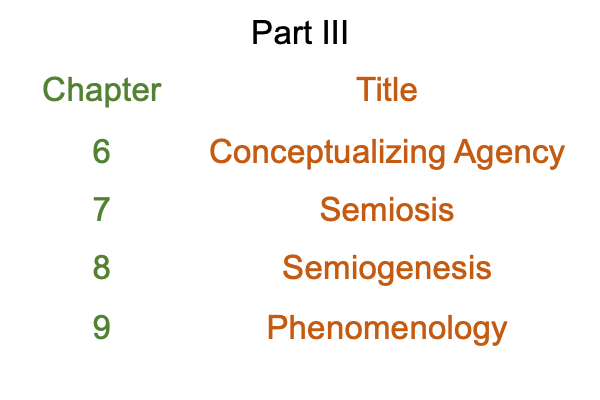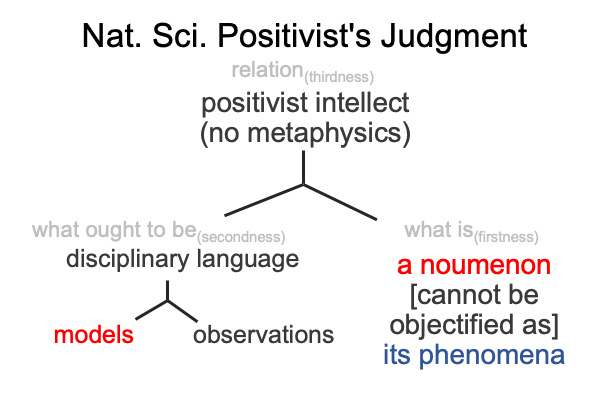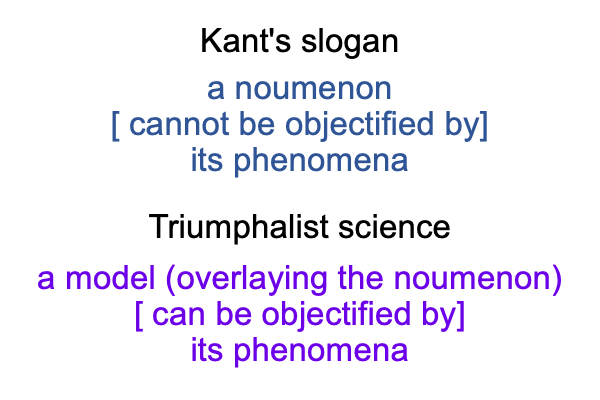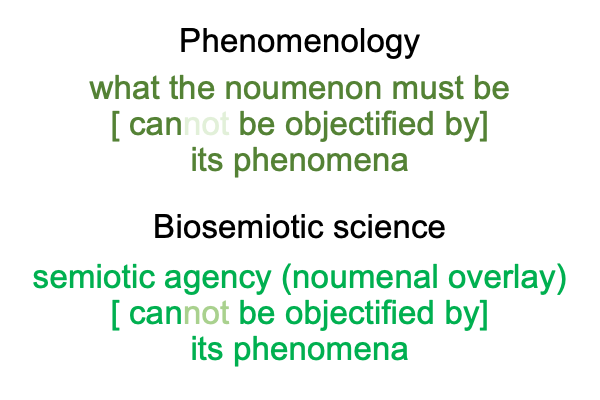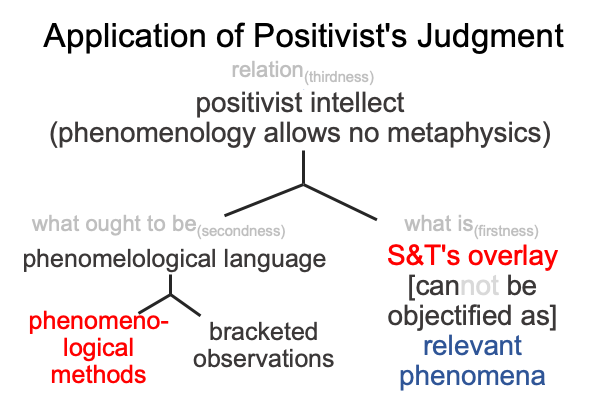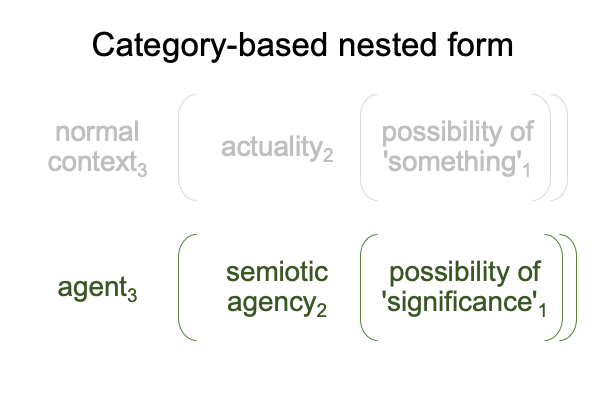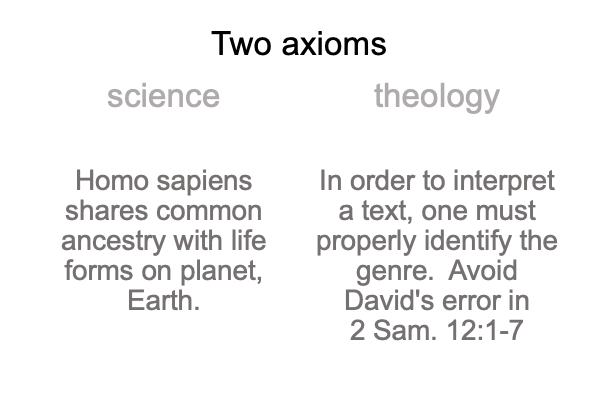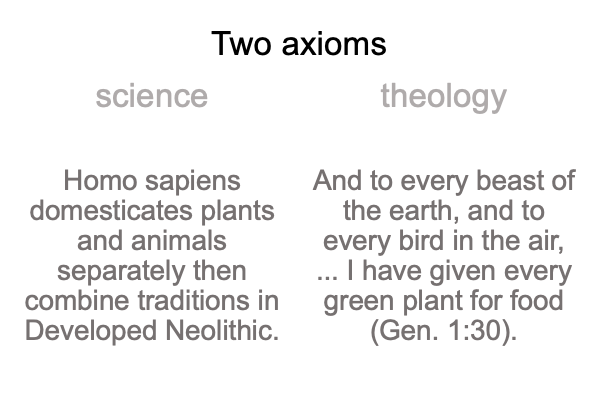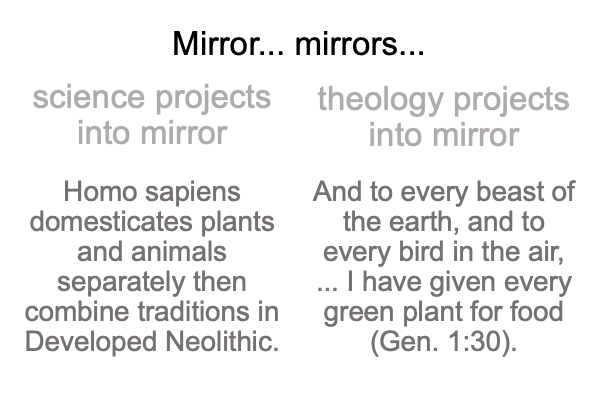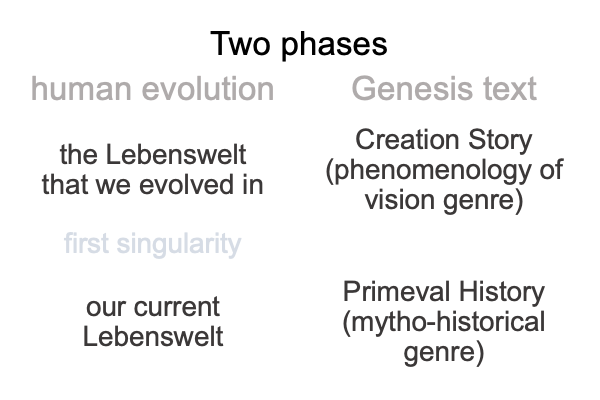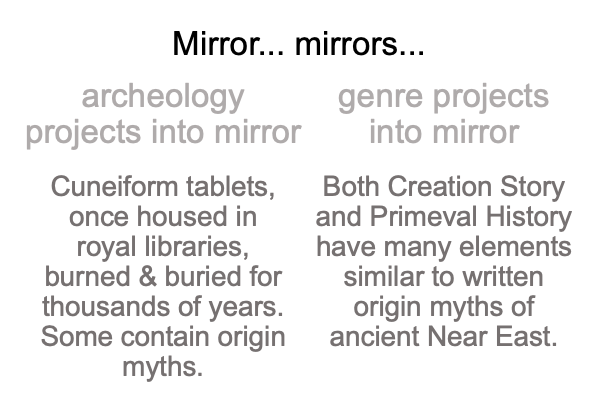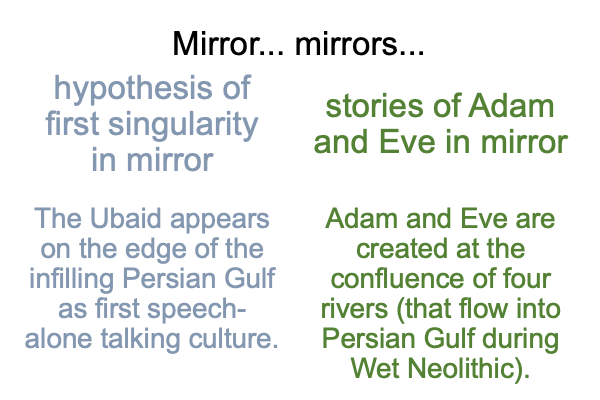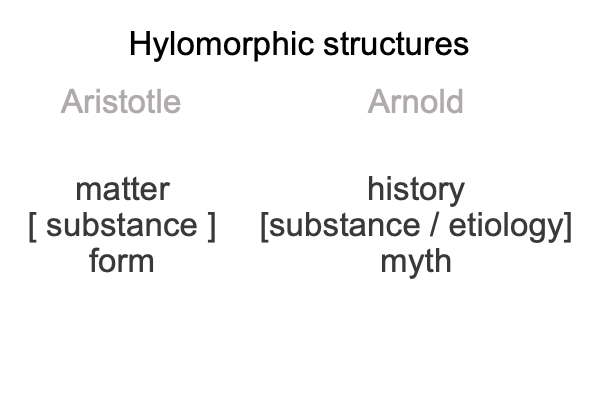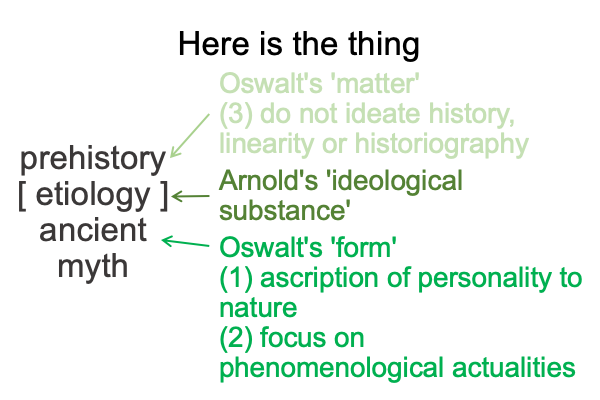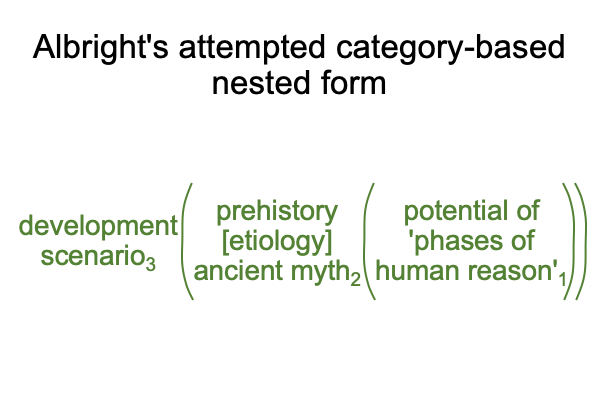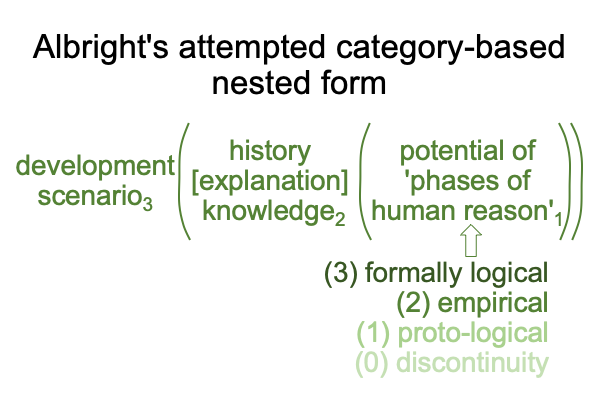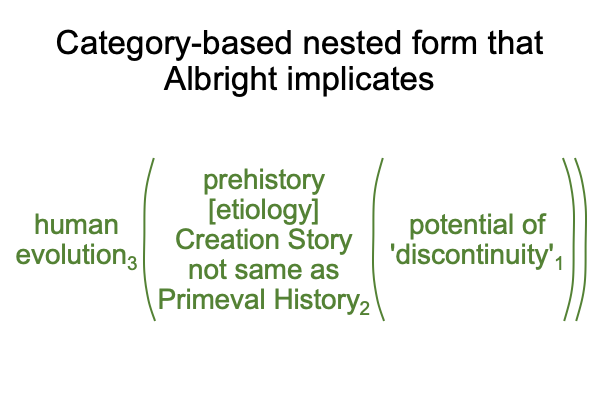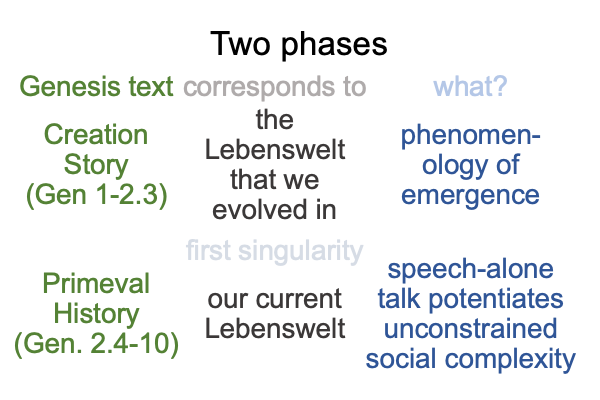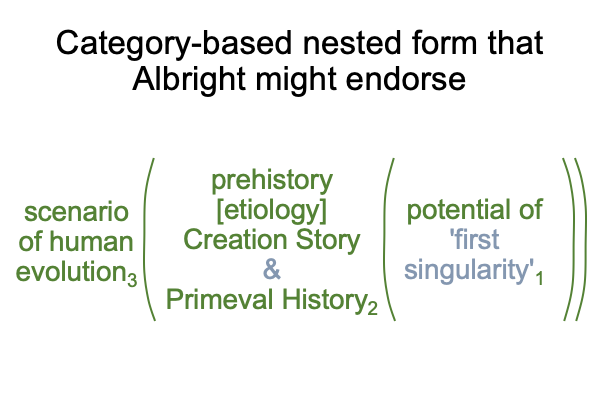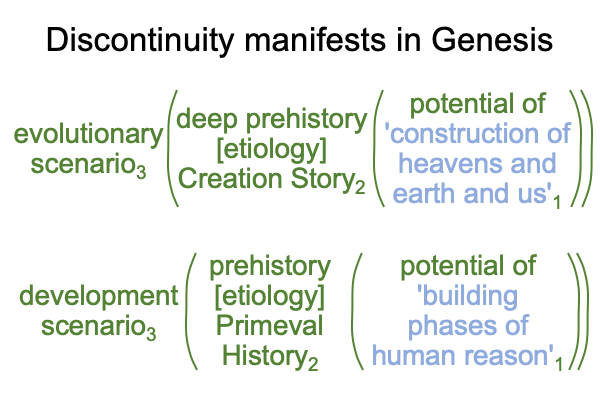Looking at Alexei Sharov and Morten Tonnessen’s Book (2021) “Semiotic Agency” (Part 22 of 24)
0193 Examine the following figure closely. Note how what ought to be associates to the category of secondness, the realm of actuality, even though it obviously belongs to the category of thirdness, the realm of mediations, normal contexts, signs, judgments and so on.
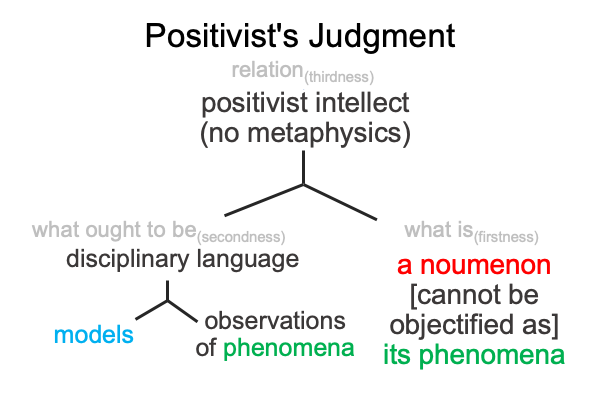
Also, what is associates to the category of firstness, even though it looks like it should belong to secondness, the dyadic realm of actuality.
0194 What do the awkward categorical assignments among the elements in the Positivist’s judgment imply?
Are models more real than their respective noumena?
Then, why can’t the noumenon be ignored?
Is the noumenon more than the sum of all its observable and measurable facets?
Can all of our observations and measurements of phenomena objectify the thing that we recognize as the noumenon?
Not directly, that would violate Kant’s slogan.
Instead, a roundabout way is fashioned by triumphalist scientists.
Models are built upon observations and measurements of phenomena, because phenomena have the potential to be observed and measured.
But, can a model substitute for its noumenon, so that the model (in the slot for the noumenon) [can be objectified as] its phenomena?
Yes, but Sharov and Tonnessen’s noumenal overlay is different.
Do Sharov and Tonnessen identify a noumenal overlay that shares a disturbing (and defining) feature of all um.. noumena, while, at the same time, expressing the cathartic character of model substitution?
0195 If so, then triumphalist scientists may feel uncomfortable as diverse models of empirio-schematic inquiry (think of the leaves on a tree analogy) produce specific models that complement, but do not replace, the one noumenon that they all have in common (think of the tree in the tree analogy).
This discomfort is exacerbated because Sharov and Tonnessen mimic the trick that triumphalist scientists use in order to resolve the tension engendered by the noumenon. Unlike a noumenon, a model (overlaying the noumenon) can be objectified as its phenomena. This what is accounts for academic laboratory science. Academic laboratory science relieves the tension intrinsic to Kant’s slogan.
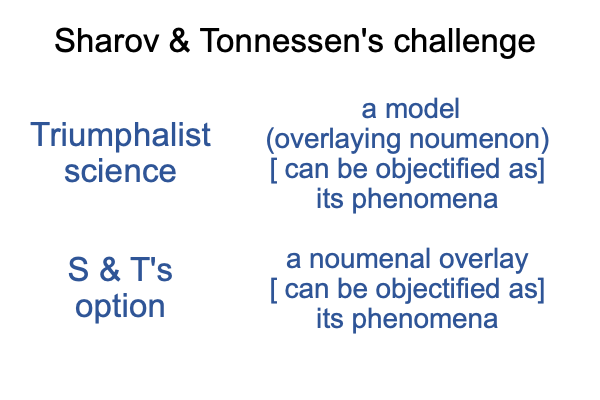
0196 So, what am I suggesting?
Sharov and Tonnessen do not offer a model that overlays the noumenon of biosemiotics (as one expects for triumphalist scientists). But, that is what they appear to do, as shown in the previous figure.
The problem is that for each application of their schema to a biosemiotic question, their noumenal overlay does not get fully objectified as its phenomena. At the same time, their noumenal overlay can be objectified as its phenomena, just as in the laboratory sciences.
0197 So, what is going on?
Sharov and Tonnessen philosophically identify a common feature of many biological things (that is, the use of specifying sign-relations) and construct a noumenal overlay capable of being read by scientists who are interested in biosemiotic phenomena and models. Consequently, the S&T noumenal overlay shares a foundational awareness with the natural sciences while, at the same time, exhibiting the character of academic laboratory science, where phenomena [objectify] the model (overlaying the noumenon).
This becomes obvious in chapter six, concerning conceptualizing agency.
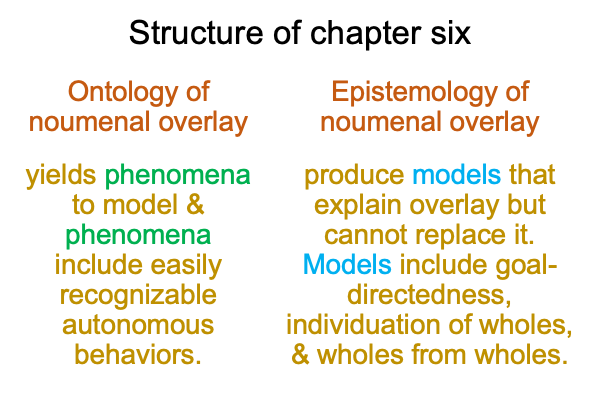
0198 The S&T noumenal overlay seems to work for every application of biology.
Consequently, their noumenal overlay looks more and more like a thing itself.
0199 Section 6.6, on the typology of agents, is no exception.
All semiotic agents exhibit self-governance and follow courses of action. Each does so in its own way. All semiotic agents have this in common.
Table 6.2 lists different types of agents. Criteria varies, including hierarchy, production, activity, resources, movement, semiosis, origin of components and individuation. Each of these criteria have at least two types. For example, production has two types (primary and secondary). Activity has three types (active, dormant, potential).
0200 Why do typologies offer an advantage?
All semiotic agents have two traits in common. These traits are precisely what needs to be modeled by biosemiotic inquiry.
